Classic Gynecomastia
Classic Gynecomastia is the most common type of gynecomastia. In this case, the enlarged breast is a combination of excess breast tissue and an excess of fatty tissue.
- Overview of Gynecomastia
- Causes of Gynecomastia
- Ideal male chest
- Joseph T Cruise, MD's Gynecomastia Philosophy
- 7 Types of Gynecomastia
- 1-Puffy nipple. Breast tissue outside of areola
- 2-Chest angle less than 45 °
- 3-Chest angle 45-60° Mild breast sag
- 4-Chest angle 60-90° Moderate breast sag
- 5-Chest angle greater than 90° Significant sag
- 6-Top of areola is above chest fold. Severe sag
- 7-Top of areola is below chest fold. Extreme sag
- Are You a Good Candidate?
- Benefits of Male Breast Reduction
- Components of Gynecomastia
- Classic Gynecomastia
- Puffy Nipples
- Fatty Gyecomastia
- Saggy Gynecomastia
- Breast Roll
- Prior to Male Breast Reduction
- Male Breast Reduction Anesthesia
- After the Male Breast Reduction
- Recovery from Male Breast Reduction
- Possible Complications
- Gynecomastia Cost and Financing
- Gynecomastia Words to Know
- Gynecomastia Before and After Pictures
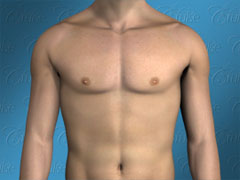 |
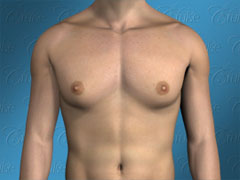 |
| Ideal Chest | Classic Gynecomastia |
Notice how the enlarged breast rounds out at the bottom compared to the more horizontal orientation of the ideal male chest. The reason for the roundness is the excess breast tissue present which prevents the underlying pectorals major muscle (which has a horizontal orientation) from showing through. The excess breast tissue hangs downward, or sags, in a more round or tear drop appearance.
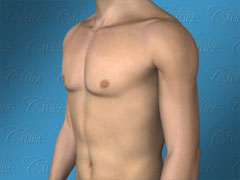 |
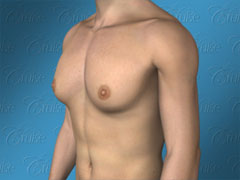 |
| Ideal Chest | Classic Gynecomastia |
The most revealing view is the oblique picture shown above. From this angle, you can see the increased projection of the chest especially at and below the nipple. Often, in this instance, the distance from the bottom of the areola to the chest fold is increased. In young men, the skin covering this distance usually snaps back, however, in older men it may not due to compromised skin elasticity.
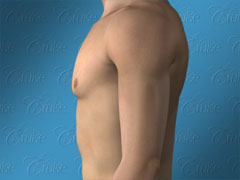 |
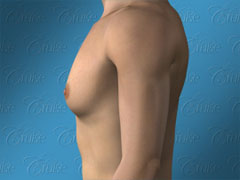 |
| Ideal Chest | Classic Gynecomastia |
In the above picture, you will notice that the nipple and areola, despite being overly projected, are flush with the surrounding skin. This is what distinguishes Classic Gynecomastia from Puffy Nipple and other types of gynecomastia.
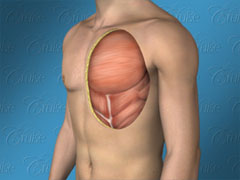 |
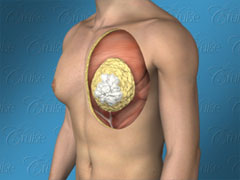 |
| Ideal Chest | Classic Gynecomastia |
In the diagram above, you see from an anatomic standpoint that Classic Gynecomastia is a combination of excess breast tissue (white) and excess fat (yellow). In most cases, the excess breast tissue is located directly under the nipple and those affected can often feel it by pinching the glandular tissue underneath the nipple. It feels firm and rubbery; much more firm and gritty than fat.
It is important to understand that EVERY man has some breast tissue located under the nipple. This is quiet normal, so having breast tissue is not a reason to have surgery. However, if you feel it is excessive and it concerns you, only then should surgery be considered.
In the lateral view, you notice the excess fat is located under the breast tissue and is dispersed within it as well. This excess fat usually spreads out over a larger area.
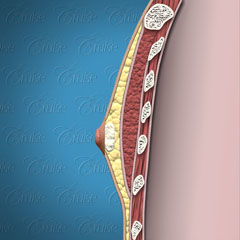 |
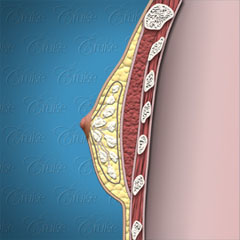 |
| Ideal Chest | Classic Gynecomastia with an excess of |


